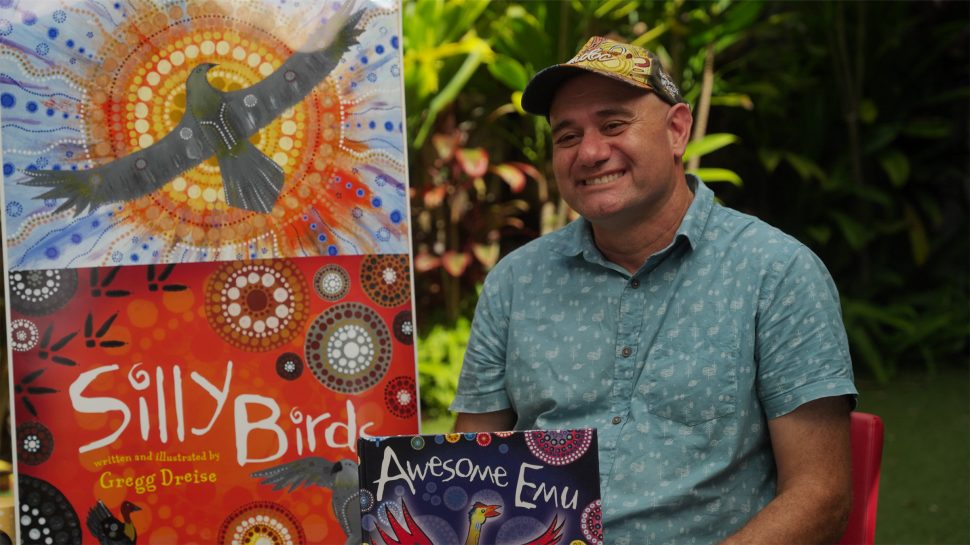8 must-read Indigenous children’s books in 2023
We bring you our pick of the best new release children’s books by First Nations authors to read with the kids in 2023, available to purchase now from the Indigenous Literacy Foundation (ILF) website.
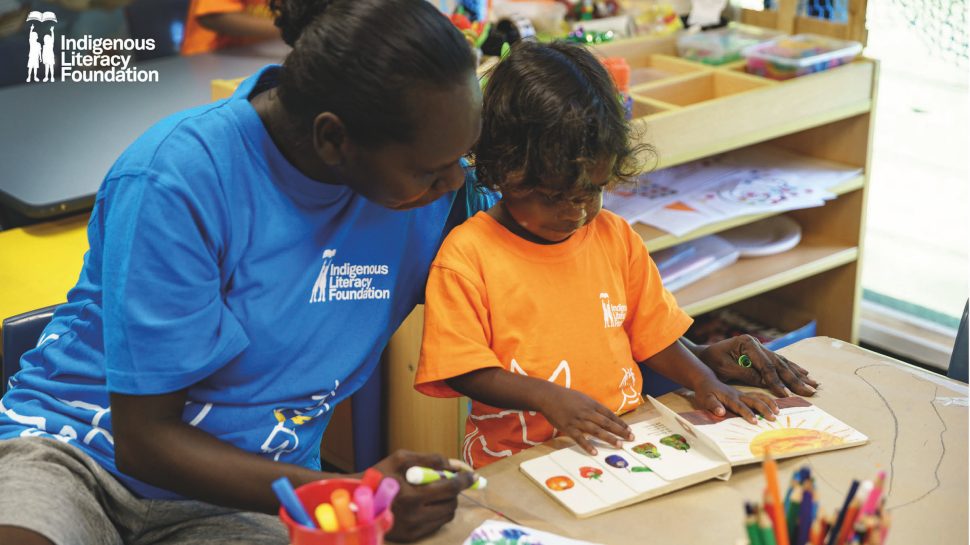
The Indigenous Literacy Foundation works with Aboriginal and Torres Strait Islander remote Communities across Australia.
Jam-packed with rich illustrations, this wonderful edit of new release children’s books by First Nations authors celebrates the unique culture, traditions and Community stories told by Aboriginal and Torres Strait Islander people.
From a traditional story about how fire came to be shared within the Community, to the hilarious antics of a cat and mouse, expect the unexpected from this new release reading list—including tales that will spark important conversations and entertain the whole family.
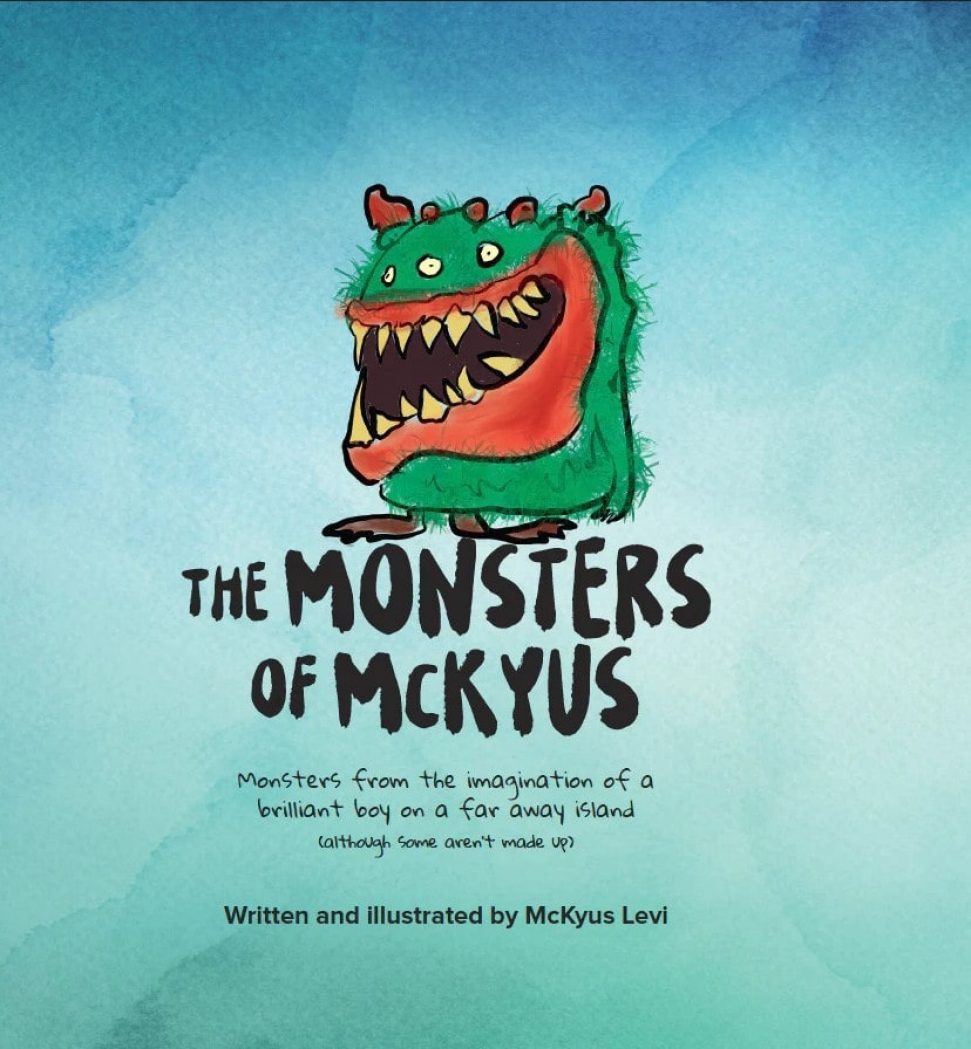
1. The Monsters of McKyus by McKyus Levi
Have you ever seen a Mug Monster or a Chomper Plant? How about a Sila Rex? (He’s Godzilla’s grandson).
This book is filled with monsters from the imagination of a brilliant boy on a faraway island. Some are scary, some are cute, and some … well, you’ll have to read The Monsters of McKyus to find out.
But beware! Some of the monsters are also very dangerous.
The author and illustrator of this incredible book is 14-year-old McKyus Levi, who loves to draw monsters. He lives in the St Paul’s Community on Moa Island in the Torres Straits, a small Community of around 500 people, and you can read more about him here.

2. Murli la by The Ngarukuruwala Women’s Group with Genevieve Campbell
Murli la is a beautifully designed gift book that celebrates the culture of the Tiwi Islands through song. The songs presented in this book hold cultural, genealogical, geographical and spiritual knowledge that has been passed down through thousands of years of Tiwi storytelling, ceremony and in the songlines that circle the islands.
As custodians of the songs, the Ngarukuruwala Women’s Group in partnership with Dr Genevieve Campbell have recorded over 40 songs in language for the first time – each with an introduction and English translation. A one-of-a-kind map of the islands, with areas marked in language, provides a snapshot into the richness of Tiwi culture.
Dr Campbell shares beautiful insights into the Tiwi Islands and her words are accompanied by stunning photographs from the time she has spent with the women. Murli la is the essential introduction to the wonderfully rich Tiwi culture and a glimpse into many lifetimes of sung knowledge.

3. Jarrampa by Marshia Cook
Jarrampa are cherabin – they are very tasty to eat but a challenge to catch because of those claws. One old woman had a clever way of catching them – she put meat between her toes and then put her feet into the billabong. When the jarrampa started to nibble at the meat, she quickly gathered them up in her skirts and put them in a bucket. Later the whole family sat around the campfire to share in a delicious meal of jarrampa.
Jarrampa is a bilingual book – in Walmajarri and English – and was produced in a workshop with ILF Ambassador Alison Lester, and author and publisher Jane Godwin. You can read more about the process of creating the book here. Jarrampa is suitable for children aged of 3+.

4. Winthali by Joe Ross and Stacey Bush
Greedy Old Man Crocodile (Lallanggarra) won’t share his fire with the Bunuba people, but Brown Falcon (Girrganyi), with the help of the young animals comes up with a clever plan to take a fire-stick from his home at Jarrambaya.
Winthali is a traditional Bunuba story about how fire came to be shared within the Community. This story belongs to the Danggu people of the Fitzroy Valley.
The book also includes a QR code that provides access to oral readings in Bunuba and English.

5. Purlka ngamaji Kakaji (Big Fat Mummy Goanna) by Emma Bear
Out on a hunting trip a family spied a big goanna. The youngest son wanted to kill it, but his mother said no because it was a Mummy Goanna. They decided to leave her alone so she could lay her eggs in a hole by the boab tree. But that night, they all thought about how good it will be when those babies grow up and how many more goannas there will be to hunt!
Purlka ngamaji Kakaji is a bilingual book – in Walmajarri and English – and was produced in a workshop with ILF Ambassador Alison Lester, and author and publisher Jane Godwin. You can read more about the process of creating the book here.
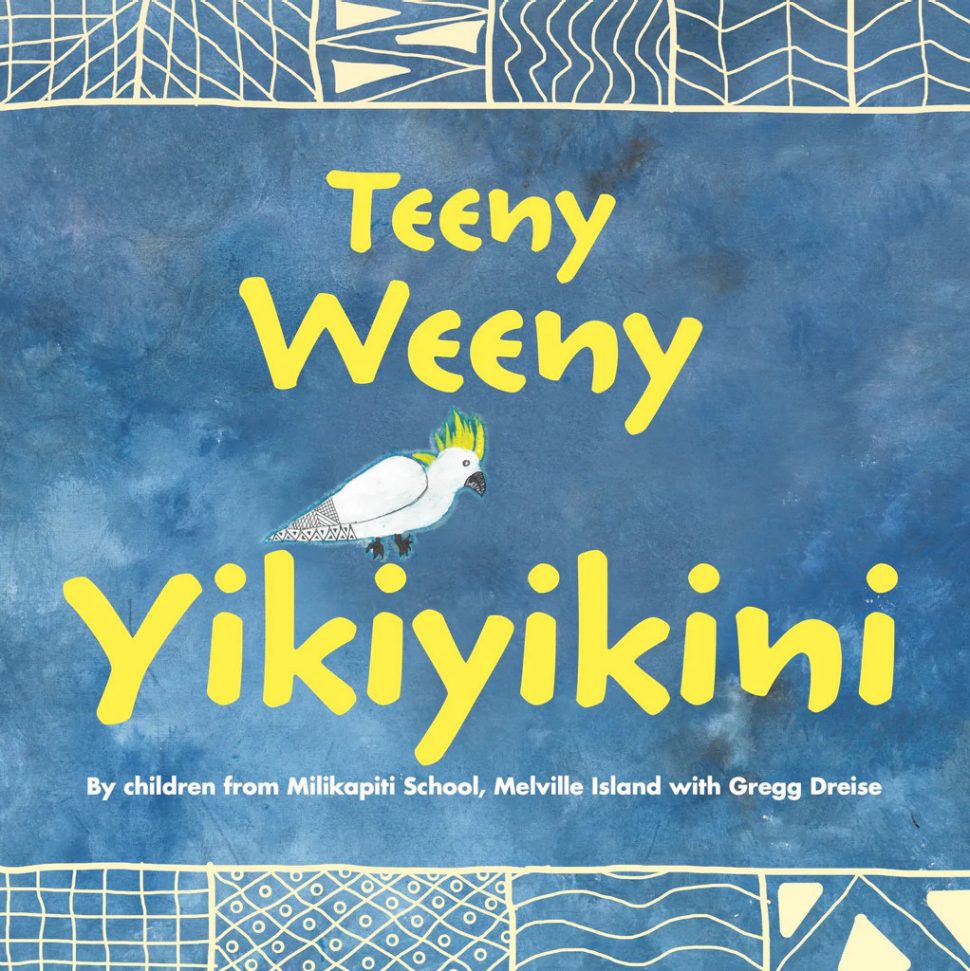
6. Teeny Weeny Yikiyikini by Children from Milikapiti School with Gregg Dreise
Teeny Weeny Yikiyikini has lost his family. He searches everywhere and asks every bird he meets if they’ve seen them, but they’re no help. Occasionally he hears a familiar squawk, but the birds that make that sound don’t look like him. And then a rainstorm comes …
Author and ILF Ambassador Gregg Dreise works with Communities to create stories because he believes it’s vital for children to see themselves and their culture in books.
Teeny Weeny Yikiyikini is suitable for children aged of 3+.
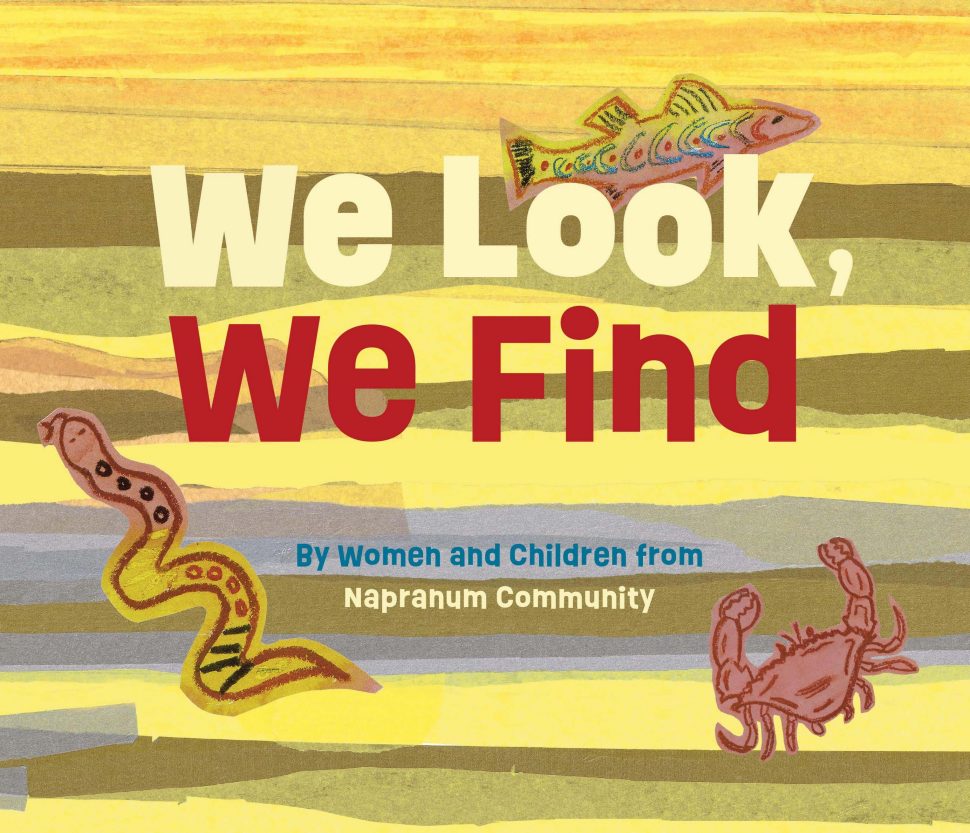
7. We Look, We Find by Women and Children from Napranum Community
When walking on Country,
what comes to your mind?
If you spend some time looking,
what will you find?
This storybook is the result of a collaborative story writing and art workshop held in the Napranum Community during 2021. The stimulus for the story came from reviewing archived photographs of preschool excursions that documented children’s experiences of being ‘on Country’ with family and Elders.
We Look, We Find features Thaynakwith language words as documented in Thanakupi’s Guide to Language and Culture: A Thaynakwith Dictionary 2007. Tissue paper, black ink, pastel and dye were used in the artistic process by Napranum women and children from the Napranum Early Childhood Centre. The elements were collaged together under the direction of Roshni Senapati to create the final artwork.
Young readers will love this book’s great rhyming scheme and fun story about what the Napranum community find on their Country.
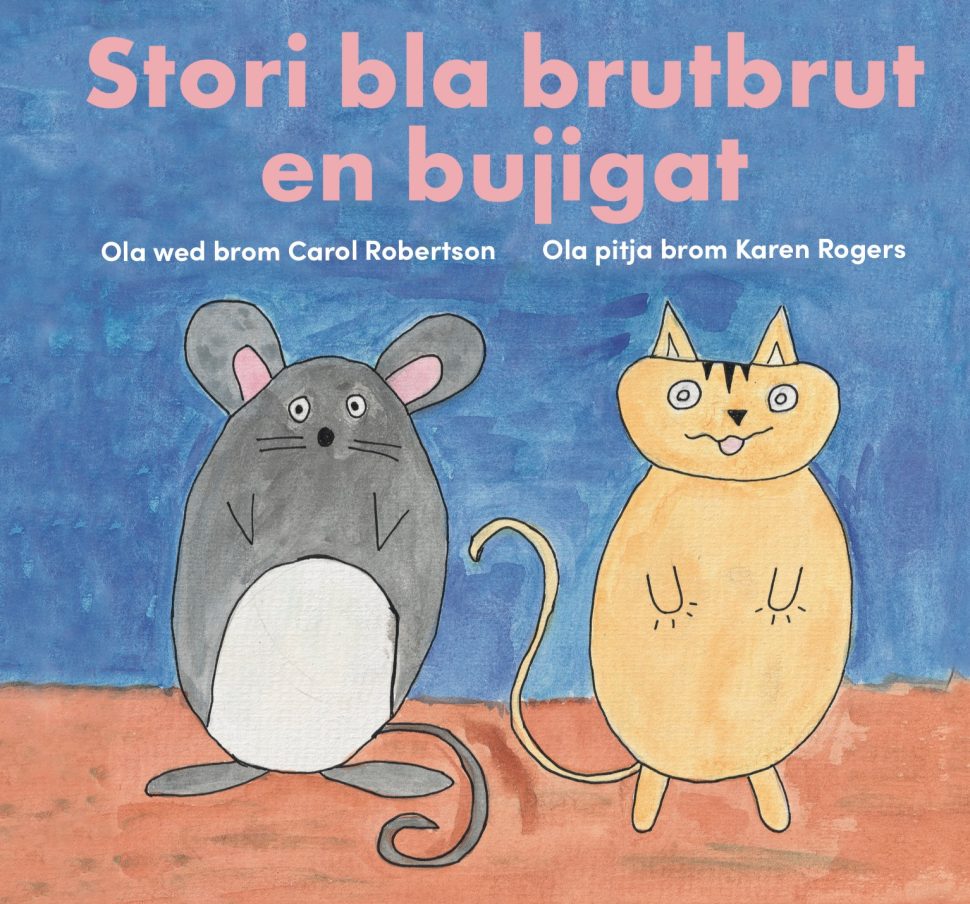
8. Stori Bla Brutbrut en Bujigat (Story about Cat and Mouse) by Carol Robertson
This is a story about Cat and Mouse.
Mouse eats insects, like grasshopper. Cat eats small birds, lizards, snakes - and also mice. One night, Cat and Mouse are both very hungry and go out hunting for food and unexpectedly encounter each other. They both get a terrible fright, but what happens next?
Stori Bla Brutbrut en Bujigat is written and illustrated by two Aboriginal women from Ngukkur. It’s a light-hearted story with delightful illustrations, and readers will laugh out loud at the antics of cat and mouse.
The book also includes a QR code that provides access to oral readings in Kriol and English.
We're proud to partner with the Indigenous Literacy Foundation to help children in remote Communities get better access to culturally relevant, high-quality books.


